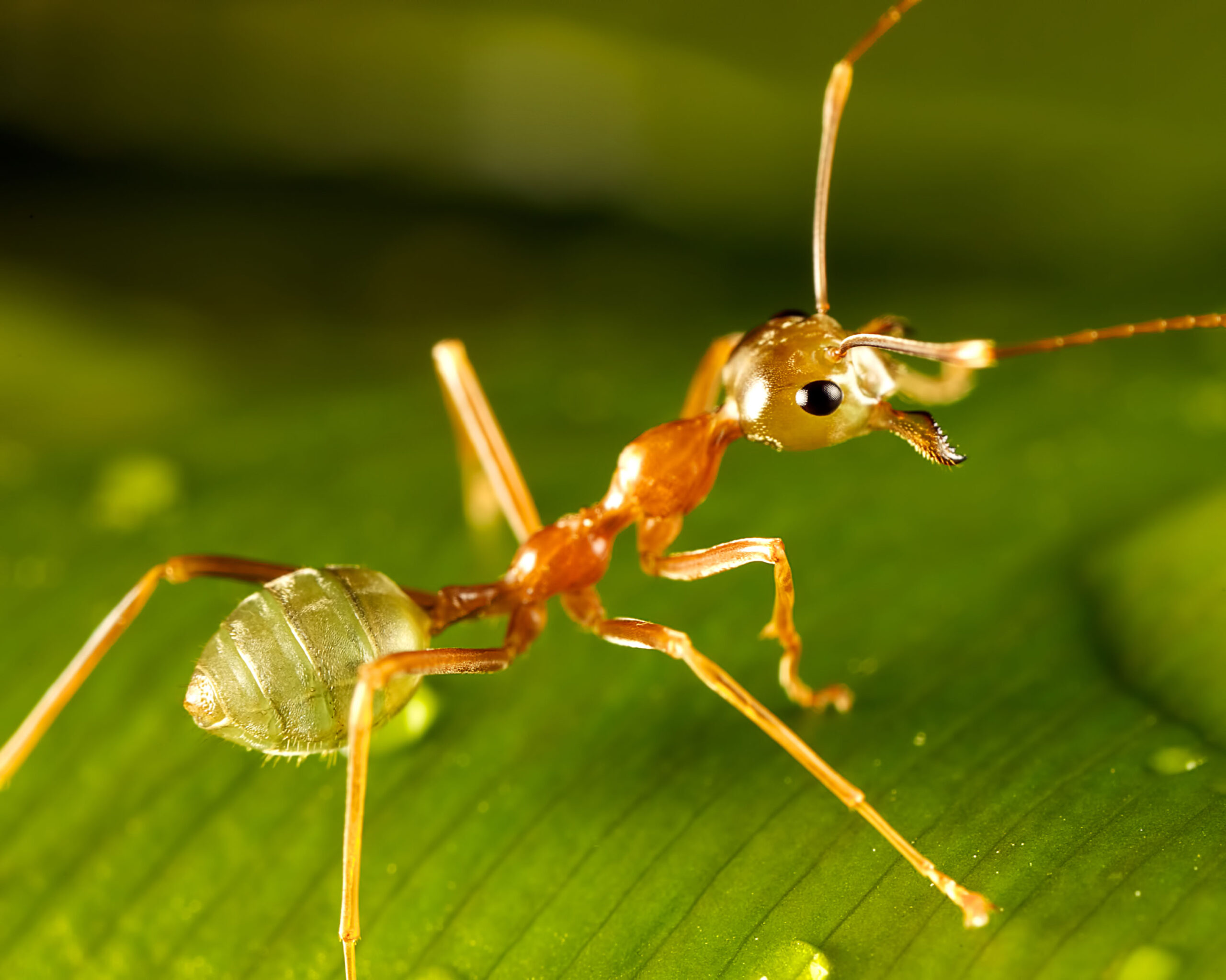This page may contain affiliate links.
Read our disclosure and privacy policy here.
The anatomy of an ant is the same across all 12,000 species of ants living all around the world. So even though each species can look different, ant anatomy, an ant’s basic form and structure, is the same across all species. That’s what makes them ants!
So how are they put together then? What special abilities does their anatomy give them? Let’s find out!
Table of Contents
7 Fascinating Closeups Of Ant Anatomy
What is anatomy and why is it useful?

Did You Know?
Did You Know?
Download Printables
INCREDIBLE POLYMORPHISM
Many species of ant are polymorphic. Polymorphism in nature occurs when there are different shapes and sizes of individuals members within a single species. Polymorphism in Ants Many species of ant are polymorphic. …. This means that a single egg laid by a queen ant will hatch into a larva that can develop into one of many different shapes of ant! What kind of ant the larva develops into usually depends on the food that the larva is fed during development, how the worker ants take care of it, and what other ants are present in the colony at the time. For example, if there are many soldier ants present in the colony, the larva has less of a chance of developing into a soldier. This is because pheromones produced by the many soldier ants will prevent the larva from developing into a soldier.
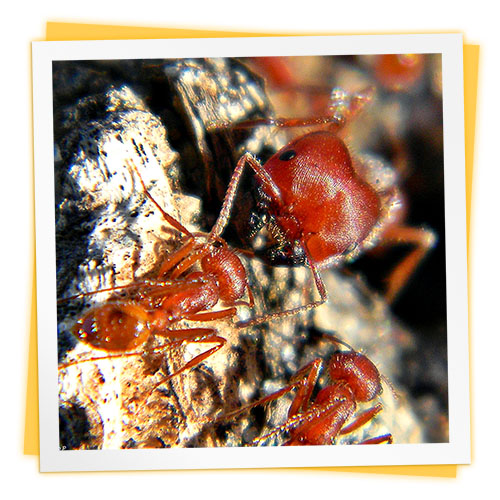
OK, so what’s the use of knowing ant anatomy? Why is it useful for us to know how an ant is put together? Well here are some really cool things you can do once you are familiar with ant anatomy:
- You will be able to identify an ant when you see one! You might think that you already know how to spot an ant, but there are actually a few other critters crawling and flying around out there that look very similar to ants, but are not actually ants.
- You will be able to tell the difference between 2 species of ants. There are some species of ants that look very similar. Only by knowing ant anatomy will you be able to tell if the ants you spotted are the same species or not. Even if you don’t know what species they are, you will at least know what to look for to tell the difference between them.
- If you are interested in starting your own ant colony, then knowing ant anatomy will help you to spot a queen ant more easily. You’ll know exactly what to look for. When I first started ant keeping, I ended up collecting a dozen carpenter ant majors thinking that they were queens! I was so disappointed when I found out I made that mistake.
- You’ll be able to appreciate a really cool feature of some ant species: polymorphism. Polymorphism is where a single ant colony will have ants of different shapes and sizes. We’ll talk more about that later in this article.
The Basics of Ant Anatomy
Ants Are Insects
Ants are insects. All insects have a body that is made up of 3 sections: a head, a thorax, and an abdomen. All insects have 3 pairs of legs, for a total of 6 legs. The mouth and mouth parts of insects are located outside the head. Insects have an exoskeleton (a hard outer shell) made of a material called chitin (Ky-tin). Just like our own skeleton supports our body from the inside, an insect’s exoskeleton supports the insect’s body from the outside. They have no bones inside them.
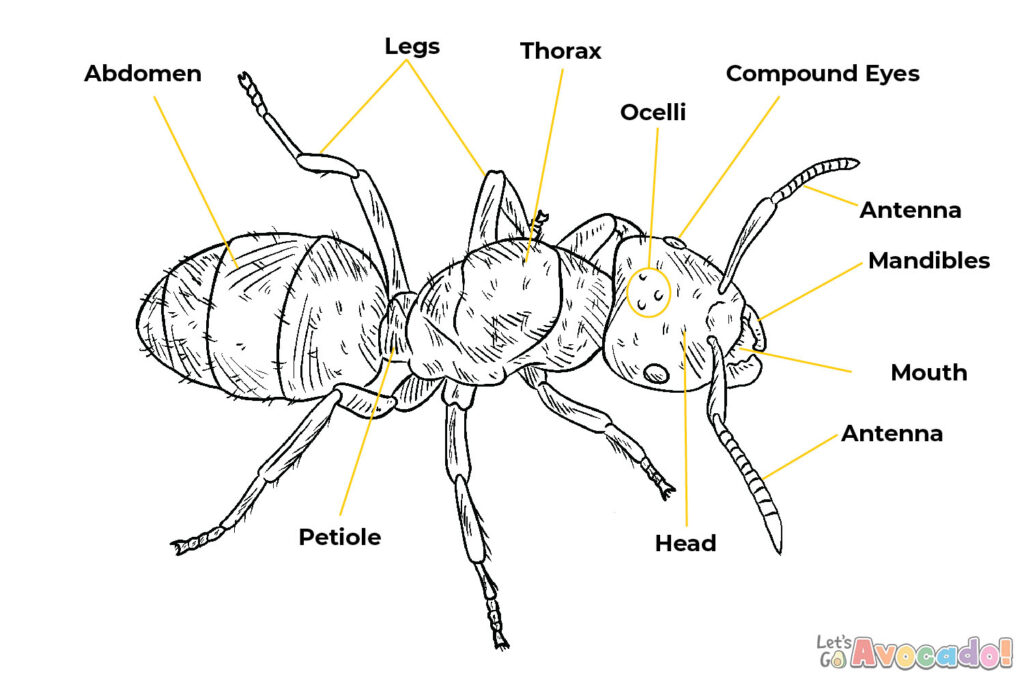
Ants have a head with eyes, ocelli, mandibles, a mouth and antennae. The head is attached to the thorax which is the middle-section of the ant. All six of an ant’s legs are attached to the bottom of the thorax. The wings of queen and male ants are attached to the sides of the thorax. The ant’s abdomen is attached to the thorax with one or two petioles. Ants with two petioles are more flexible between the abdomen and the thorax than ants with a single petiole. That increased flexibility helps some ants defend themselves better.
Ants have Compound eyes
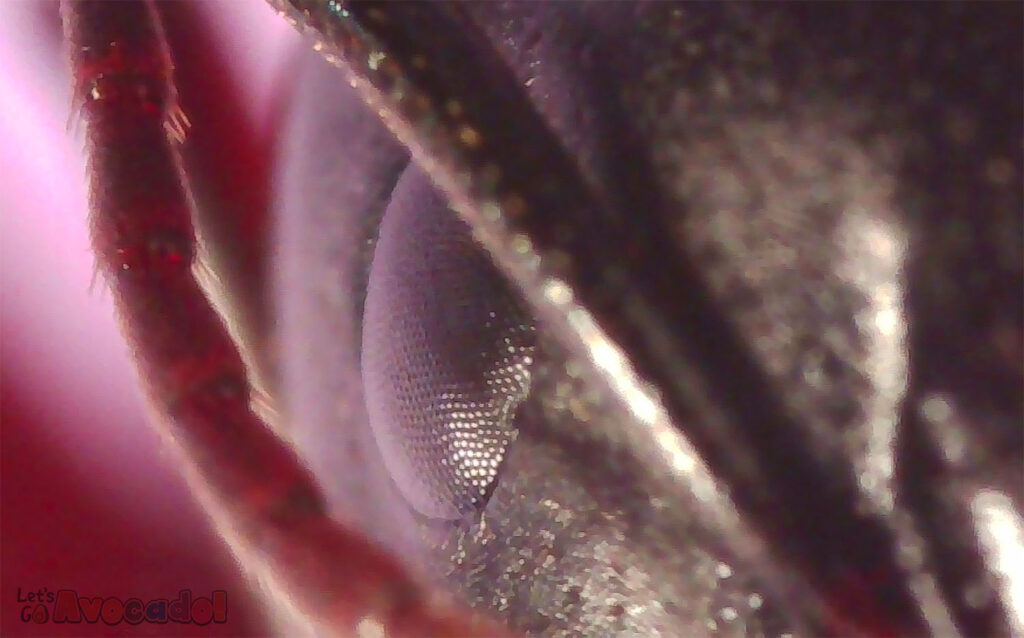
Closeup of a Carpenter Ant camponotus novaeboracensis compound eye. Look at the amazing texture of the multiple lenses… Wow!
Ants have compound eyes, like most insects. Compound eyes are eyes that are made up of many smaller lenses – like a large eye made up of many smaller eyes. Large dragonflies can have as many as 30,000 lenses spread out over their eye! Ants usually have up to 1000 lenses.
Compound eyes cannot see as well as simple eyes like ours, but they are able to see in more directions and have a wider field of view than simple eyes. Imagine being able to see what’s going on not only in front of you but also to your left and right, and even a bit behind you! That would be an incredible advantage if you are an insect watching out for predators. It’s very unlikely that you would be able to sneak up on an ant!
An ant’s compound eyes are used to sense light, just like our own eyes. They can make a visual image, or a picture, in their mind about what is around them. But on top of that, ants, like many insects, also have ocelli which are used to sense light in a different way.
An Ant's Ocelli can sense light intensity
The ocelli of an ant are located on the top of their heads, and look like 3 small indentations. They are able to sense light, just like the eyes. However, the ocelli can sense light intensity, while the eyes can sense light patterns which the brain converts to images. It’s quite an amazing property of ant anatomy that they have 2 different ways of sensing and interpreting light!
So the ocelli can tell how bright a light is, while the eyes can tell what color it is, for example. So the eyes can see an image, like a leaf, while the ocelli can tell how bright and sunny the day is, or how dark it is inside their colony.
If you were to lift up a rock and find an ant colony, the first warning the ants would get would be from their ocelli, which will tell them that suddenly there is a lot more light!
An Ant's Antennae are able to 'smell'
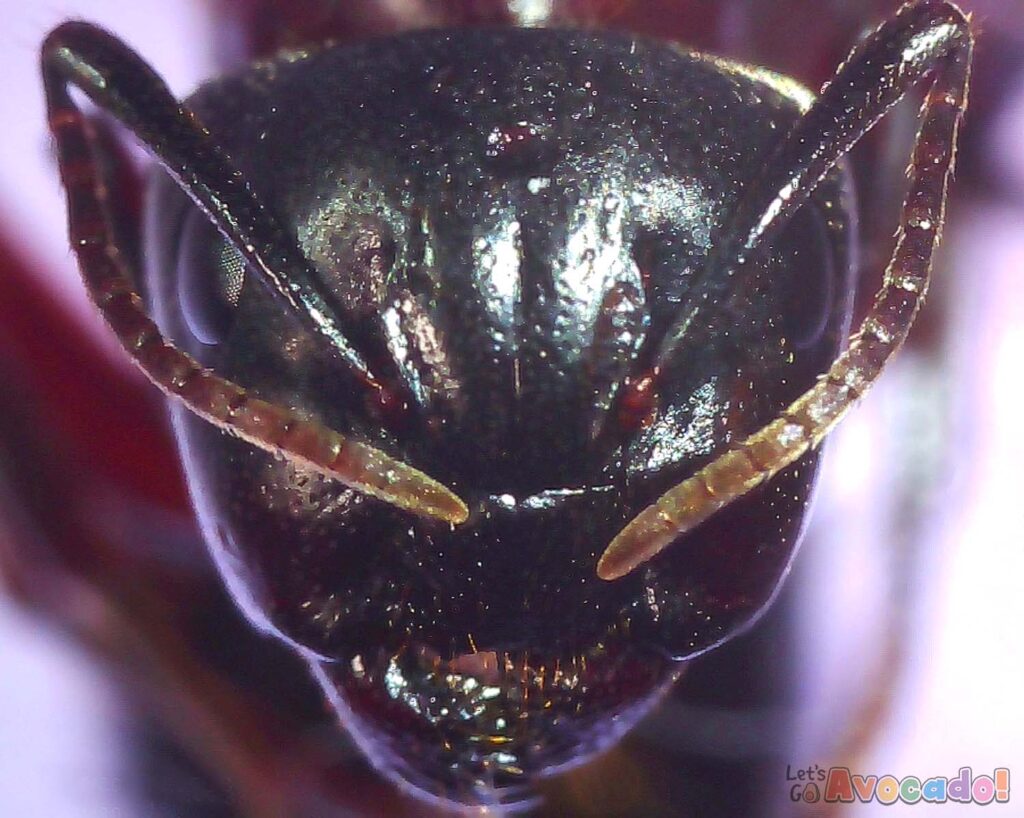
The ocelli can be seen as indentations at the top of the head. The antennae and mandibles are clearly visible. The mouth is behind the mandibles.
Have you ever seen ants reach out to touch each other with their antennae when they meet? They’re communicating! When an ant reaches out and touches another ant with their antennae, they are able to smell the scent of the other ant. This scent tells them whether or not the other ant belongs to the same colony, since every colony has a unique scent.
This scent comes from chemicals called pheromones. Ants produce and use pheromones not only to recognize each other, but also to lay scent trails so that other ants can follow them to food or other points of interest. When ants find food, they also retain some of that scent so that other ants can tell what they found, and know what to expect at the end of the pheromone trail.
An ant’s antennae are elbow shaped and have 2 distinct parts. The scape is the part of the antenna that connects to the head of the ant, up to the first joint of bend. After the bend, that second part is called the funiculus. The funiculus is made up of several segments of different sizes. One of the more advanced ways that you can tell ant species apart is by looking the number of sections in the funiculus, and their shapes.
Strong and Razor Sharp Mandibles
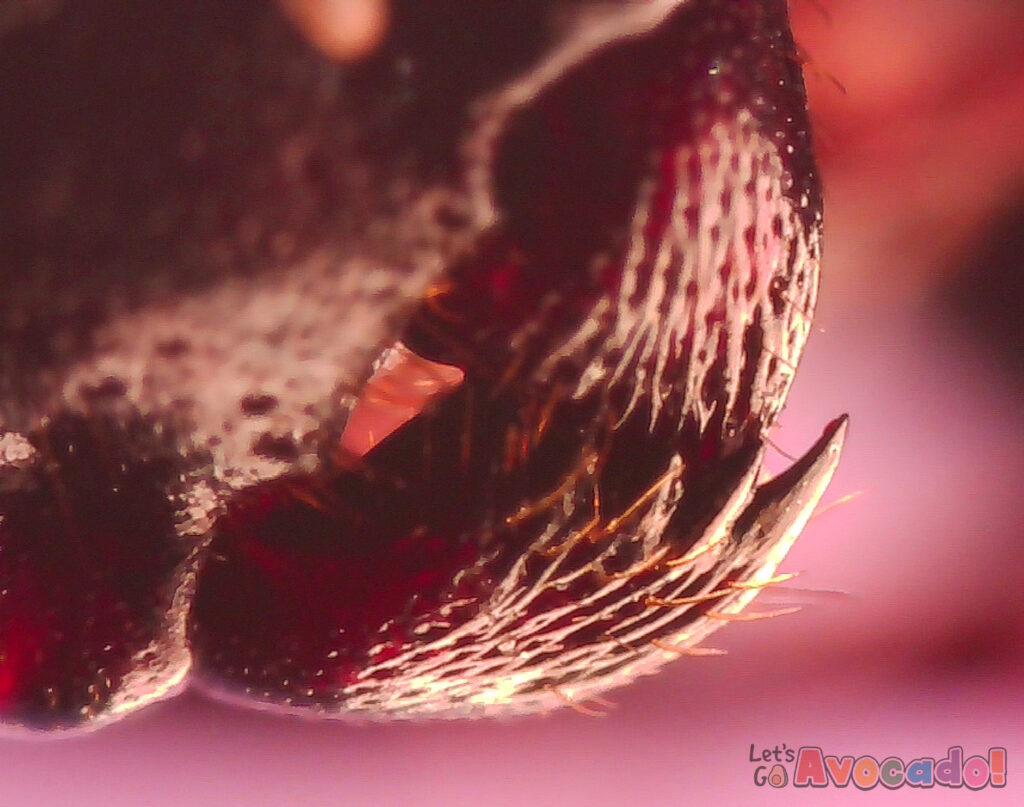
The sharp serrated mandibles of a carpenter ant queen (camponotus novaboracensis).
An ant’s mandibles are useful for a whole bunch of different tasks. Since ants do not have hands, they use their mandibles to carry things like eggs, larva, and food. They also use them to attack prey and ants from other colonies, or to defend themselves. Leafcutter ants like atta cephalotes use their mandibles to cut leaves to bring back to their colony for farming. And of course, ants use their mandibles to dig their colonies, carrying a few grains of dirt at a time to excavate the massive underground cities they call home.
It’s important to know that an ant’s mandibles are not the same as it’s mouth. An ant does not eat with its mandibles. It carries food, and cuts it down to size with its mandibles, but an ant’s mouth is actually located behind the mandibles. Ants cannot eat solid food, and their mouth actually filters out solids so that they only drink fluids.
So what do ants do with the solid food they carry back to their colony? Well, it’s actually the ant larva that process solid foods! These solid foods, like dead insects, are usually high in protein. Worker ants will bring small pieces of solid food and lay them out on the bellies of the larva. The larva then excrete a substance that digests the food externally, and transforms it into a liquid. The worker ants then return to drink that liquid and collect it in their social stomachs, and redistribute it back to the larva and queen.
The workers themselves do not need protein for survival – they only need sugar. They get all the sugars they need while foraging, and bring some back in their social stomachs to share with the rest of the colony.

Did You Know?
Did You Know?
Download Printables
SUPER STRONG MANDIBLES
At least one species of ant uses it’s super strong mandibles to jump! A species of Trap Jaw ant, Odontomachus rixosus, is able to use both it’s feet, and it’s mandibles, to jump away from danger. While other species of Trap Jaw ant have been known to jump with their feet or their mandibles, Odontomachus rixosus is the only known species which can do both.
To jump, they snap their mandibles against the ground or against an enemy which catapult’s their body into the air.
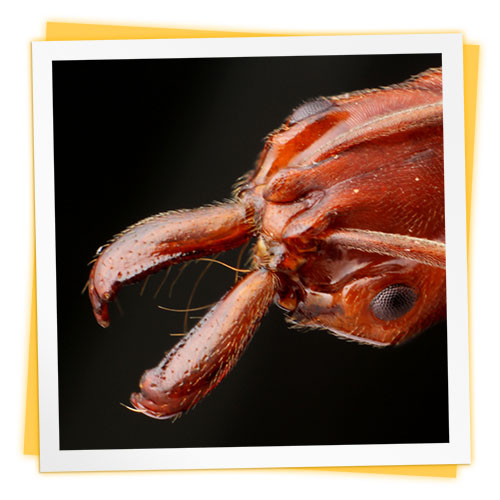
The Ant's Thorax Is Packed Full Of Powerful Muscles
The thorax of an ant is also called the Mesosoma. That’s a good word to learn when discussing ant anatomy with others. An ant’s wings (if they have them), legs, head, and abdomen are all connected to the thorax. So the thorax is packed with all the muscles needed to operate the all of the ant’s major movements.
The winged ants of a colony, called alates, usually have larger a larger thorax than the ants without wings. This is because of the added muscles needed to operate the wings. In fact, when some new queens found a colony, they rip off their own wings and are able to lay eggs and go without food for many months because their body consumes the muscles that used to be used to control their flight.
Since queen ants no longer need wings once they start, or found, their new colony, those muscles are no longer needed. Queens that are able to do this are called ‘fully clausteral’. Fully clausteral queens are ablet o stay safe in their small new burrow, called a founding chamber, until their first eggs hatch, and the first workers are old enough to gather food for her on their own.
The Petiole Gives an Ant the Ability To Point It's Abdomen In Any Direction
Petioles are small segments between the thorax and the abdomens. Ants will usually have one or two petioles, which connect the abdomen to the thorax. The petioles allow the ant’s abdomen the flexibility to bend in all directions. An ant with a single petiole can be quite flexible – but an ant with 2 petioles can really twist it’s body in amazing ways.
Acrobat ants, crematogaster cerasi for example, are able to bend their abdomen completely over their thorax so that the tip of the abdomen can point in almost any direction. As a self defense mechanism, acrobat ants will release venom that they can wipe onto their attackers, to ward them off.
You might think that the ant’s thorax contains vital organs, like the heart and lungs, but that is not the case. First of all, ants do not have lungs or a heart. Instead, they have an organ that pumps their blood called a ‘dorsal aorta’. It’s responsible for circulating an ant’s colorless blood through its body.
Ants, and all insects in general, can breathe with the help of branching tubes called tracheae. Air flows through the trachea by entering the ant through 9 to 10 pairs of holes called spiracles, located on the sides of their bodies.
An Ant's Legs Can Grip Just About Anything
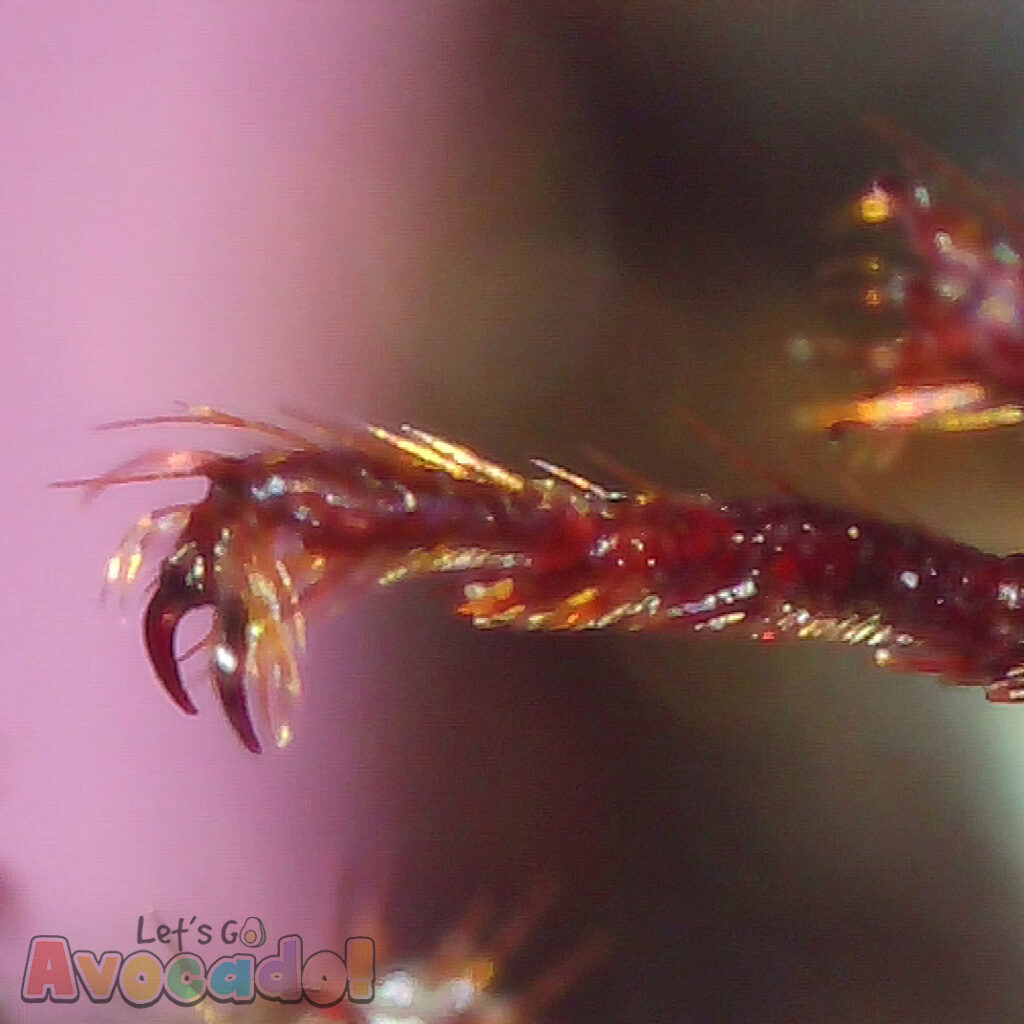
The claw at the end of each ant leg helps the ant to grip onto virtually any surface.
Anyone who has ever come across an ant on the sidewalk knows that an ant’s legs are designed for running. These little insects can move! But you would have also noticed that ants can climb walls, walk on ceilings upside down, and pretty much grip onto and climb anything. That’s because an ant’s legs end in claws that is used to grip and hang onto all kids of surfaces.
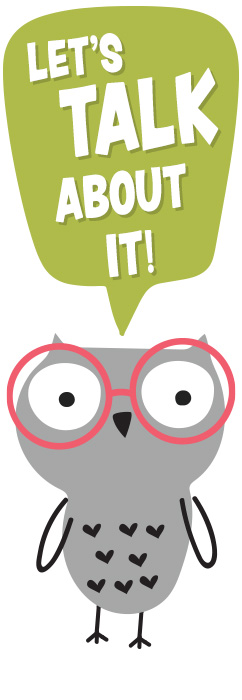
DISCUSSION
DISCUSSION
DISCUSSION
FOLLOW-UP TOPICS
Science Topics
Pheromones
Anatomy
Exoskeleton
Polymorphic
When we think of predators, the first animal that usually comes to mind is a wild cat like a lion or a tiger. But there are all kinds of predators in nature. Did you know herbivores are also considered predators? You can read more about polymorphism in our glossary.

There’s a lot to explore right where we are, in our own neighborhoods and backyards! Join us while we get off the couch and explore the everyday wonders of nature, science, space, engineering, art, and anything else we stumble upon during on our adventures.


